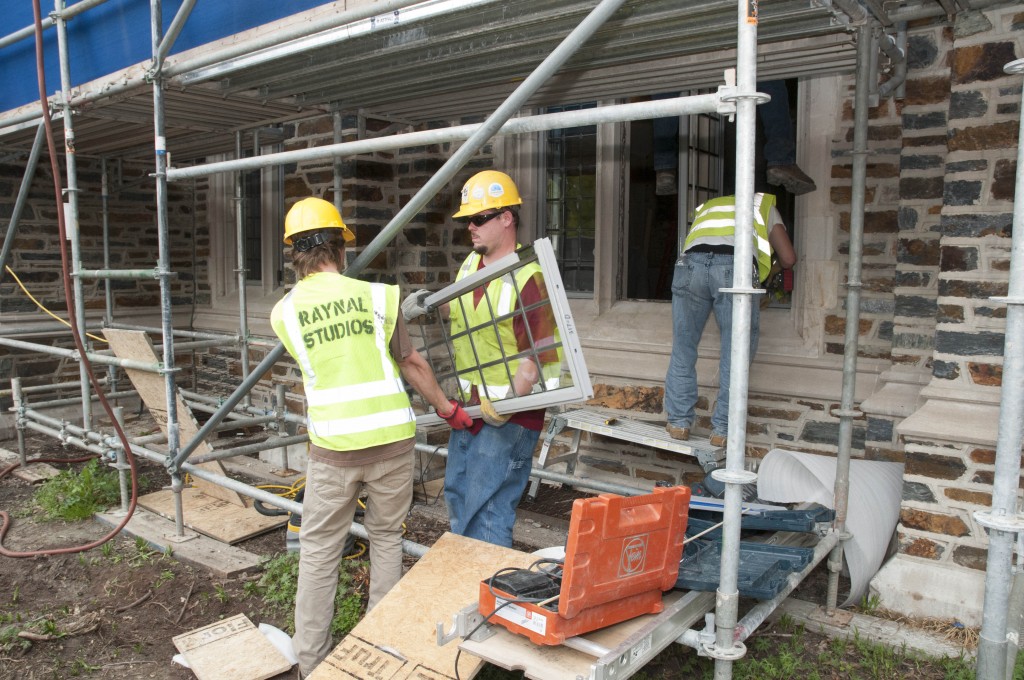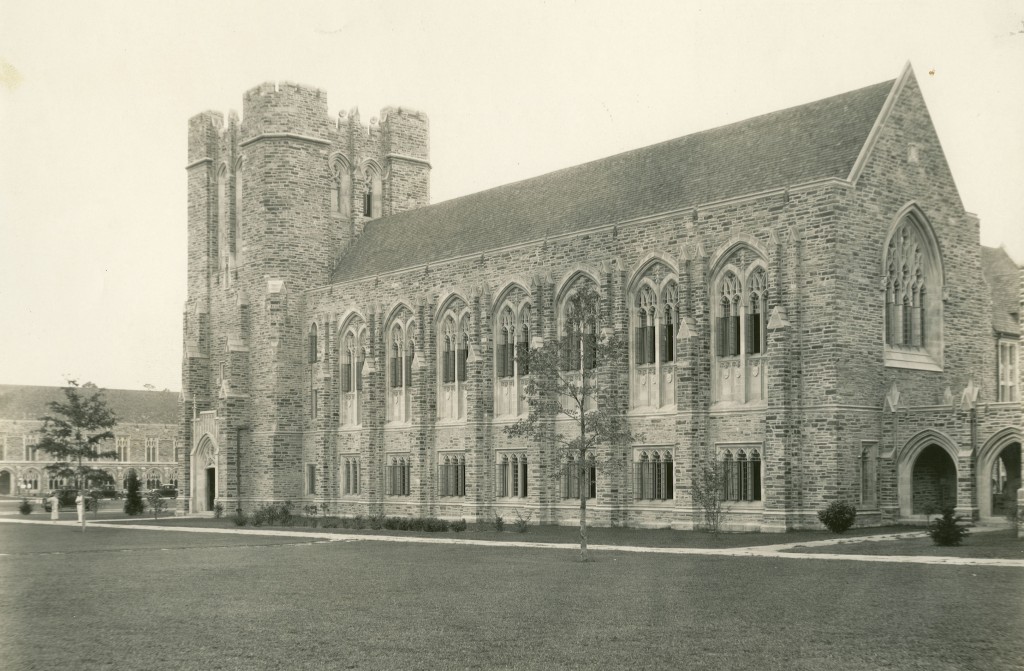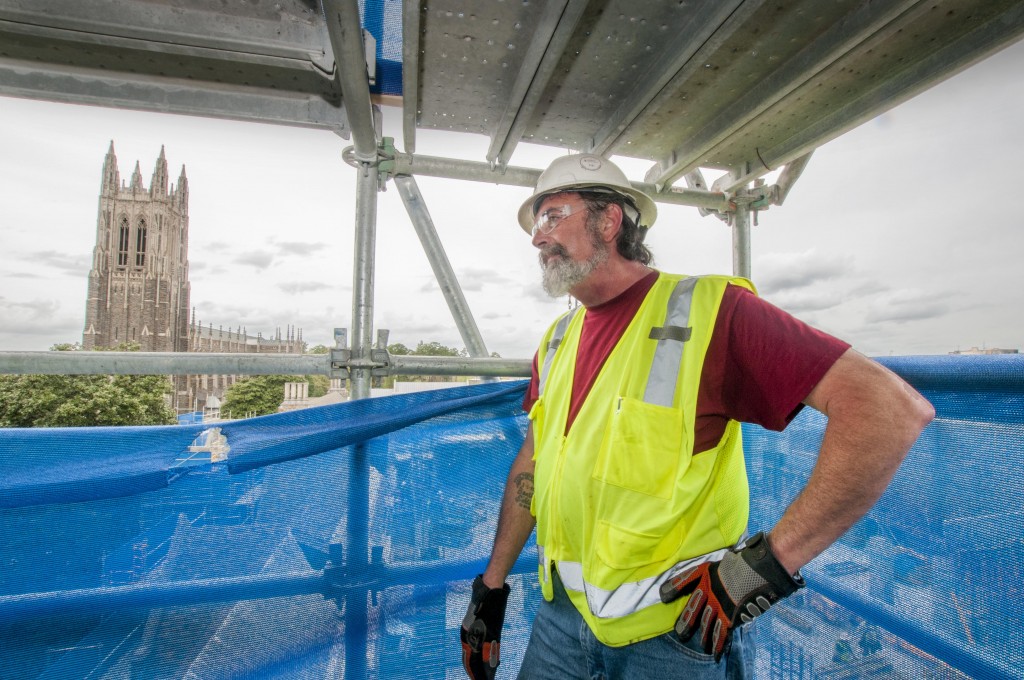
By Aaron Welborn
Among the things that separate a good library from a truly great one, there is one distinction so subtle we often fail to notice it. It has less to do with the size and richness of an institution’s holdings, or the knowledge and expertise of its staff—although these are essential—and more to do with a certain quality of light.
We are talking, of course, about windows.
Windows provide the natural light that suffuses a reading room with bookish warmth and radiance, as well as the inspiring views that invite the mind to wander. Too few windows and a library becomes a gloomy vault. Too many and the materials on the shelves will whiten and wither in the sun.
There are 356 leaded glass casement windows in the David M. Rubenstein Rare Book & Manuscript Library, and another 490 tracery panels designed with varying degrees of ornamental flourish. The glass is of exceptional clarity, considering its age (circa 1928). It was also of exceptional cost for the time, hand-blown to minimize the presence of bubbles and distortions. It’s hard to find glass like that outside of Europe these days.
“This building was made in the time of true craftsmen,” says John Raynal.

He should know. Raynal specializes in the restoration of historic and stained glass. He was brought in to refurbish the windows as part of the Rubenstein Library renovation project. One of the major goals of the renovation, as well as one of the major challenges, is to preserve as much as possible of the building’s original character. That includes the old-fashioned windows that are so much a part of the “Gothic Wonderland” look of Duke’s West Campus.
It is highly specialized work, the domain of a small group of skilled practitioners. But Raynal has more than three decades of experience and an artisan’s appreciation for things that were built to last.
Over the last several months, Raynal and eleven of his employees removed all 356 casement windows throughout the library and transported them back to his studio in Natural Bridge, Virginia. There each window was disassembled, pane by individual pane, its hinges and hardware cleaned of eighty-six years of rust and grime, given a special powder coating, re-leaded, re-assembled, buffed and polished, and carefully packed up for shipping back to Durham. (Most of the building’s tracery windows were too delicate to remove and had to be restored in place.)
Once complete, “They should last another hundred years without any problem,” Raynal says.

It’s a big job with a lot of moving parts, but Raynal is accustomed to those. He has restored the windows in Princeton University’s Chapel, Boston’s Old South Church, New York’s St. Patrick’s Cathedral, historic St. Paul’s Church in Alexandria, Virginia, and many other architectural landmarks.
Having enrolled at Virginia Tech in Engineering, he dropped out after taking a job with a stained glass company and realized that he had found his niche. (One of his earliest apprenticeships involved repairing a sanctuary window in Duke Chapel.) That’s when his real education started, working on the churches, cathedrals, and magnificent public buildings of New York, Boston, Washington, and other cities throughout the northeast.
“Most of those old buildings had European roots,” Raynal says. “They were built by immigrants and master craftsmen who brought their skills over with them.” The opportunity to work on such buildings up-close was a kind of graduate-level training in the glazier’s trade.

Walking around the scaffolding that surrounds the Rubenstein Library, he recognizes that same attention to detail and workmanship in the building’s construction. Duke’s West Campus was built during the Great Depression. It was a time when skilled labor could be had cheap, when “the best were willing to work for half the price,” Raynal says, and the university spared no expense.
Now, generations later, he is helping to preserve the legacy of those original campus craftsmen in a most transparent way. When the project is complete and the renovated Rubenstein opens next year, it will be filled once again with that rare quality of light that tells you when you’ve entered a great library and invites you to have a look around.



Great article Aaron! It’s a real treat for the construction team to be working with John Raynal and his guys. They have great respect for the building and period appropriate restoration.
Lovely article. It’s nice to get a glimpse of what is happening behind all of the scaffolding — especially when you paint the picture so beautifully.
Aaron, thank you for including us so extensively in this piece.